1.) In what ways does your media product use, develop or challenge forms and conventions of real media products?
Our film can be compared and contrasted to two major intruder films, ‘When a Stranger Calls’ and ‘Scream’, two films about a young girl enjoying an evening in, babysitting/watching a movie who has an uninvited visitor trying to kill her. Our film follows a similar storyline in that we have a young teenage girl receiving mysterious phone calls. We chose to go down this story line because we know that having a babysitter/vulnerable teenage girl home alone is a tried and tested route which, if we were undertaking the whole film, would make us a lot of money. Working titles are a fan of using the tried and tested route of romcoms, having the underdog win the girl’s heart e.g. ‘Wimbledon’, ‘Bridget Jones’. So we know that it would be ok.
Originally, in our three minute long version, we were going to set the scene and location of an isolated, scary house by having a long, establishing shot of the house. Then we would have the intruder walking all the way up to the house, to create mystery and speculate who the camera ‘eyes’ were. As time wouldn’t allow us this luxury, we had to cut it short, but this establishing shot is used in ‘When A Stranger Calls’ at the beginning to add a scary, foreboding atmosphere to the film, and emphasise the isolation of the house.
Our film can be compared and contrasted to two major intruder films, ‘When a Stranger Calls’ and ‘Scream’, two films about a young girl enjoying an evening in, babysitting/watching a movie who has an uninvited visitor trying to kill her. Our film follows a similar storyline in that we have a young teenage girl receiving mysterious phone calls. We chose to go down this story line because we know that having a babysitter/vulnerable teenage girl home alone is a tried and tested route which, if we were undertaking the whole film, would make us a lot of money. Working titles are a fan of using the tried and tested route of romcoms, having the underdog win the girl’s heart e.g. ‘Wimbledon’, ‘Bridget Jones’. So we know that it would be ok.
Originally, in our three minute long version, we were going to set the scene and location of an isolated, scary house by having a long, establishing shot of the house. Then we would have the intruder walking all the way up to the house, to create mystery and speculate who the camera ‘eyes’ were. As time wouldn’t allow us this luxury, we had to cut it short, but this establishing shot is used in ‘When A Stranger Calls’ at the beginning to add a scary, foreboding atmosphere to the film, and emphasise the isolation of the house.
Scream and our film both start with a black screen. This allows mystery to be built up and the audience to wonder what is to come. We chose to start our film like this because we felt it was most effective of the films we watched to build anticipation and grab our attention. We felt ‘When a Stranger Calls’ starting straight away was too sudden and didn’t give the audience much time to think about the film or build a reaction to the nothingness.



We then chose a font and effect called ‘fridged’ for our credits. It is blue and white and wiggles. The blue and white writing is also used in Scream. We chose to copy this colour scheme because we felt the blue was a cold colour and helps add uneasiness to the atmosphere of our film. Although ‘Dolls’ uses white writing which is different to ours because they wanted to emphasise the pureness of the china doll faces and reinforce this subconsciously into the audiences minds to start to freak them out.
We chose to keep the background black as we felt the mystery of the unknown was allowed to be shown and it helped to carry on adding to the spooky atmosphere. We picked this up in our research of ‘Scream’ and ‘Dolls’. When watching them we felt it left us scared as the darkness was a sense of the unknown and anticipation as we waited that little bit longer in suspense of what was to come next.
Some titles came up on a black screen, ‘Scream’ and ‘Dolls’, while others came up with action in the background. ‘When A Stranger Calls’ has their title in red while on an establishing shot of the isolated house. Our first plan was to reproduce it like this to emphasis the isolation of the house and girl but time would not allow us to do this, so we put it a little further on, when the babysitter is on the phone talking to the parents. This emphasis the fact she is completely alone and isolated.


All the films we analysed had scary, tension building music running through the opening credits. There were two main instruments used, piano and/or violins. ‘Scream’, had a bold piano piece at the beginning of the credits which lead on to the screen going black and scary thumping music starts which then fades into phone ringing. ‘When A Stranger Calls’ uses violins which are daunting and build anticipation and tension. For our film, we chose to use a piano piece which leads on to violins. It was more a case of what we could find to fit the clip, but it works well because it has harsh plopping notes then screeching of violins. Using either the piano or the violin piece meant the music would not have been thick enough for our film and there would not have been enough tension.

To emphasise the phone call, we showed a close up of the telephone and the girl picking it up. This highlights the point that it is not just a normal phone call but
 that there is something odd going on. We picked this idea up from ‘Scream’ when the girl picks up the phone. It is a normal activity but the close up shot and such attention to it subconsciously makes the audience feel as if there is something not right about the caller.
that there is something odd going on. We picked this idea up from ‘Scream’ when the girl picks up the phone. It is a normal activity but the close up shot and such attention to it subconsciously makes the audience feel as if there is something not right about the caller.‘Scream’ goes straight into the mystery caller. The girl and the man have a chat and a laugh. This emphasises the girl’s naivety and shows her being vulnerable. Where as ‘When a stranger calls’ has several phone calls beforehand with just breathing on the other end. This helps build anticipation and you are left wondering if it is a prank caller or not which builds apprehension. We chose to go with the second idea of having heavy breathing first as we felt this had the best effect of building suspense for our audience.
All our research films showed the victim doing ordinary things, popping popcorn, sitting down etc, so we decided that our character would be watching TV. Because we felt it meant our audience could relate to the character which would help them build more emotion for the character.
2.) How does your media product represent particular social groups?
Our main character you see in our clip is Jess. She is a pretty standard character in horror films, a young, vulnerable teenage girl. There are versions of her in ‘Scream’ and ‘When a stranger calls’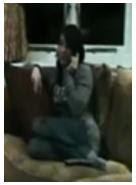
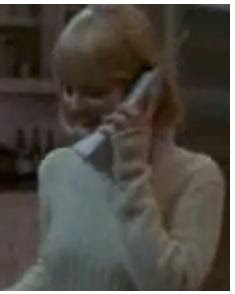
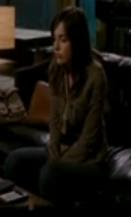
All our research films showed the victim doing ordinary things, popping popcorn, sitting down etc, so we decided that our character would be watching TV. Because we felt it meant our audience could relate to the character which would help them build more emotion for the character.
2.) How does your media product represent particular social groups?
Our main character you see in our clip is Jess. She is a pretty standard character in horror films, a young, vulnerable teenage girl. There are versions of her in ‘Scream’ and ‘When a stranger calls’



 She is a young brunette who clearly cares about her appearance and fashion. She is wearing jeans, a sloganed t-shirt and cardigan which adds to the mis en scene. It shows she does not get dressed up for babysitting but still cares about her appearance like nearly every teenage girl in the world. We chose to portray her like this so that girls can relate to her as she is, ‘the norm’, and a fairly average character. This would mean that more viewers are attracted to watch our film as they can relate to the character and find her appealing. Although Jess was dressed in an Abercrombie and Fitch t-shirt, which could isolate a lot of people who don’t have/can’t afford/aren’t encapsulated by the clone fashion of this brand. This could mean that people don’t like her because of the image this brand portrays, but we took this risk and decided it would do more for the character than for her to wear a non label t-shirt.
She is a young brunette who clearly cares about her appearance and fashion. She is wearing jeans, a sloganed t-shirt and cardigan which adds to the mis en scene. It shows she does not get dressed up for babysitting but still cares about her appearance like nearly every teenage girl in the world. We chose to portray her like this so that girls can relate to her as she is, ‘the norm’, and a fairly average character. This would mean that more viewers are attracted to watch our film as they can relate to the character and find her appealing. Although Jess was dressed in an Abercrombie and Fitch t-shirt, which could isolate a lot of people who don’t have/can’t afford/aren’t encapsulated by the clone fashion of this brand. This could mean that people don’t like her because of the image this brand portrays, but we took this risk and decided it would do more for the character than for her to wear a non label t-shirt.We chose Jess to be a young, girl babysitting as for many teenage girls this is a very standard job. If we had chosen a boy it would have alienated a lot of people as women tend to be the more maternal sex and babysitting is more of a recognised job for girls.
We used a grand, more materialistic house to do our filming in, as we felt this helped the girl feel isolated in the house. This, we believed could allow other babysitters to relate to her, as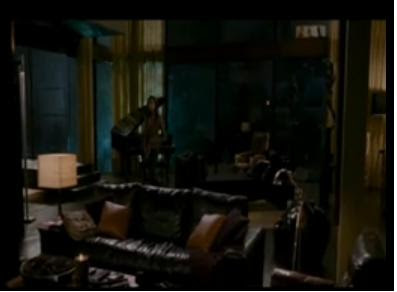 they have turned up in houses which are very materialistic and embrace all the modern technology that can be bought. Also, this house can relate to people whose houses are actually furnished like this, and have everything they want and need.
they have turned up in houses which are very materialistic and embrace all the modern technology that can be bought. Also, this house can relate to people whose houses are actually furnished like this, and have everything they want and need.
If we used an American actress then this would have meant it would appeal to the American market much more, and would have made a lot more money.
3.) What kind of media institution might distribute your media product and why?
 they have turned up in houses which are very materialistic and embrace all the modern technology that can be bought. Also, this house can relate to people whose houses are actually furnished like this, and have everything they want and need.
they have turned up in houses which are very materialistic and embrace all the modern technology that can be bought. Also, this house can relate to people whose houses are actually furnished like this, and have everything they want and need.If we used an American actress then this would have meant it would appeal to the American market much more, and would have made a lot more money.
3.) What kind of media institution might distribute your media product and why?
‘Brain Damage Films’ would be a good distributer as they specialise in horror films. They distribute worldwide, although solely on the internet. This is a new and upcoming form of media to view on computers, so this would be effective. Selling on the internet would mean we have a huge market audience as an estimated 1,596,270,108 (http://www.internetworldstats.com/stats.htm) people use it, so we have a larger audience potential.

Warner Bros would be a good distribution route as they have dealt with many other horror films already, ‘One Missed Call’ and ‘Murder by Numbers’. So they will have connections and know the best route to take for distribution. They are an American company, so have lots of connections with influential people. Although, I don’t think our film would make it big in America as it has not used any American actors and is very British. For these reasons I think ‘Working Title Films’ would be a better distributer for our film, as they have
 more English connections, with their parent company being ‘Universal Studio
more English connections, with their parent company being ‘Universal Studio s’ and ‘BBC Film’. Or if not working titles, then ‘Film4’, as they don’t focus on broadcasting blockbusters but aim for a more niche and highbrow market. They have their own TV channel which shows a mixture of old and new independet, art house, British, foreign language and specialist cinema.
s’ and ‘BBC Film’. Or if not working titles, then ‘Film4’, as they don’t focus on broadcasting blockbusters but aim for a more niche and highbrow market. They have their own TV channel which shows a mixture of old and new independet, art house, British, foreign language and specialist cinema.
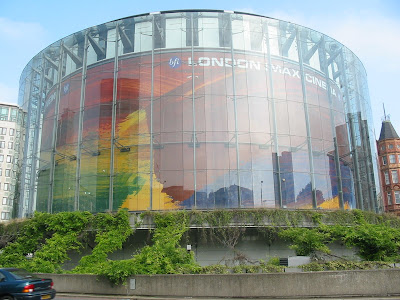 If the rest of the film was amazing and we thought it was a blockbuster our film could been shown in a Imax cinema, as they have played many of our genre before, ‘My Bloody Valentine’. This would mean we have a fairly wide audience and more people would be interested in coming to view our film because it is ‘new technology’. Although if we didn’t feel it would do so well, it could be kept to an art house, but this only gives us a niche market rather than a mass audience, which isn’t really what we want as we want to accrue as much money as possible!
If the rest of the film was amazing and we thought it was a blockbuster our film could been shown in a Imax cinema, as they have played many of our genre before, ‘My Bloody Valentine’. This would mean we have a fairly wide audience and more people would be interested in coming to view our film because it is ‘new technology’. Although if we didn’t feel it would do so well, it could be kept to an art house, but this only gives us a niche market rather than a mass audience, which isn’t really what we want as we want to accrue as much money as possible!To get it on to D
 VD or if we were to go straight into DVD sales, we would probably go with the ‘Maverick Entertainment Group’, as they are a ‘leading distributor of independent film’. They offer ‘guaranteed domestic distribution’. This would mean we are guaranteed to make and distribute our film to be sold which is ultimately what we want.
VD or if we were to go straight into DVD sales, we would probably go with the ‘Maverick Entertainment Group’, as they are a ‘leading distributor of independent film’. They offer ‘guaranteed domestic distribution’. This would mean we are guaranteed to make and distribute our film to be sold which is ultimately what we want.4.) Who would be the audience for your media production?
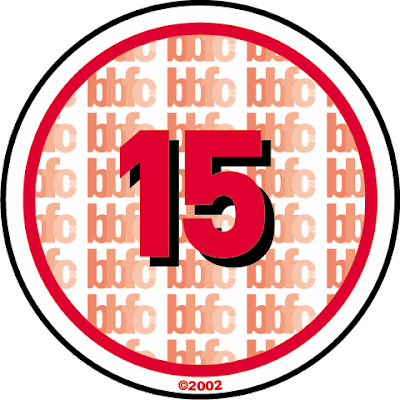 Like most horror films, I believe our target market is older teenagers to late 20’s, as some scenes later on might not be very child friendly. It should have a certificate 15 because it is fairly spooky and certain scenes might scare a child, e.g. the babysitter being watched through the window. Also older adults won’t be as interested in scaring themselves the way teenagers and young adults do, so they won’t be as interested in the film.
Like most horror films, I believe our target market is older teenagers to late 20’s, as some scenes later on might not be very child friendly. It should have a certificate 15 because it is fairly spooky and certain scenes might scare a child, e.g. the babysitter being watched through the window. Also older adults won’t be as interested in scaring themselves the way teenagers and young adults do, so they won’t be as interested in the film.I believe that it will be mainly girls who watch our film over guys as the main character is a girl, so the female audience will relate to her. Also there isn’t much gore, torture; car chases etc, which appeals to males. We chose to appeal to girls more than guys because everyone in the group was a girl, so it was easy for us to know what we felt was scary and what would work to manipulate our senses to give us a fright.
Although, I would say the film is open to both boys and girls, not to reduce our market and keep our profits to a maximum.
5.) How did you attract/address your audience?
In our Media class we shared our ideas for our film and we told each other if we thought it would work or not and how we could improve our ideas and plans.
To address our audience we have used a standard actress who many people can relate to. She is moderately ordinary in jeans and a t-shirt. To attract more people we could have used a more famous actress, but we feel we have ‘discovered’ a new actress who will become famous in the future, with our film as her starting point.
We would attract the audience by the rating because it is a 15 certificate. This would mean that advertising could be placed accordingly for example we wouldn’t put an advert in ‘Girl Talk’ magazine, but it would be better placed in an older persons magazine, and TV advertisements would be after the watershed of 9.00pm

Also, as our target audience was 15+, we got our classmates and fellow peer members to come in at lunchtimes and after school to watch the videos we had made.
6.) What have you learnt about technologies from the process of constructing this product?
On our first night of recording we found out the battery wasn’t fully charged in the camera, so had to use it with the power lead. This made things difficult because we couldn’t accomplish all the scenes we wanted to, e.g. the upstairs scene or some of the outside bits. So this has taught me to always check you equipment and make sure everything is working.
I had used a video camera before, but I had never used an apple Mac. S
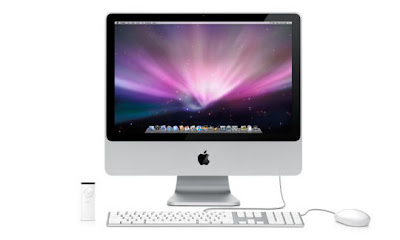 o it was all very alien to me. I didn’t even know how you get on the internet or that word was actually script! It took me a while to work out how you use the computer and what all the buttons do as we did not have a lesson or instructions on how to work them. I kept on having to ask how to do things because I didn’t know how. But it has taught me how to work the Macs and all the keyboard shortcuts which is really useful. It was quite
o it was all very alien to me. I didn’t even know how you get on the internet or that word was actually script! It took me a while to work out how you use the computer and what all the buttons do as we did not have a lesson or instructions on how to work them. I kept on having to ask how to do things because I didn’t know how. But it has taught me how to work the Macs and all the keyboard shortcuts which is really useful. It was quite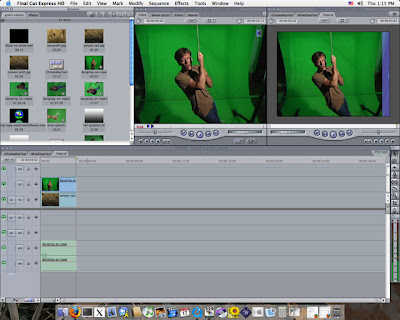 exciting learning how to use final cut express and making our very own films. It took me quite a while to work out all the keyboard shortcuts, and I’m sure I doesn’t know them all yet, but they became very useful. The most annoying thing was putting the music over our finished film. There were so many problems here. The sound kept going wrong with it jumping, being cut, getting unsynchronised, and having to ‘write’ the sound every time you moved the clip an mm! This became so frustrating after having completed the film and getting everything perfect.
exciting learning how to use final cut express and making our very own films. It took me quite a while to work out all the keyboard shortcuts, and I’m sure I doesn’t know them all yet, but they became very useful. The most annoying thing was putting the music over our finished film. There were so many problems here. The sound kept going wrong with it jumping, being cut, getting unsynchronised, and having to ‘write’ the sound every time you moved the clip an mm! This became so frustrating after having completed the film and getting everything perfect. 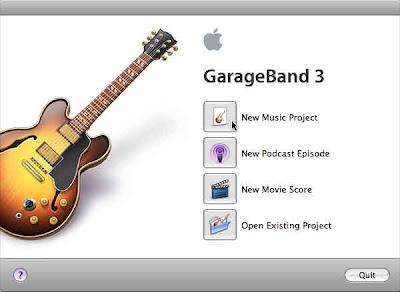 For music we had quite a few problems. We couldn’t find anything on the first program, so we started searching MySpace. We sent some messages to bands of music we liked, but they failed to reply. So once we couldn’t find anything Mr Van Straten said we could use a programme called garage band. This turned out to be really useful as we found the main background song used throughout our film. Although, it took us about two double lessons to find the correct music. That was frustrating because we couldn’t find anything with the exact genre of music we wanted, and we just scrolled down lots of random pieces.
For music we had quite a few problems. We couldn’t find anything on the first program, so we started searching MySpace. We sent some messages to bands of music we liked, but they failed to reply. So once we couldn’t find anything Mr Van Straten said we could use a programme called garage band. This turned out to be really useful as we found the main background song used throughout our film. Although, it took us about two double lessons to find the correct music. That was frustrating because we couldn’t find anything with the exact genre of music we wanted, and we just scrolled down lots of random pieces.We also tried to find footsteps and breathing for our clip, but we couldn’t find quite the right thing, so our teacher ended up recording the breathing for us, and we muffled the footsteps!
There were some problems remembering how to import and export the music onto our clip, as you had to send it to iTunes first and then drag it through to our film, but we got there in the end with a bit of playing around and many mistakes.
Live Type was a fairly easy program to use as you just pick your font and effectively type in what you want it to say. It was fun to try all the different effects as there were so many of them. The difficult part was knowing where to put them in your clip so it fitted in just right with the music. They distorted the whole clip and we spent even more time fiddling around with the sound to get it just right again. Also once they were on the clip they seemed to pop up and disappear very quickly, so we spent some time trying different dissolves over the top to make them look more gradual.
Once our clip was on YouTube it was interesting to read the different responses we received from people. We only obtained two comments but one was really useful in helping us promote the clip further and get more views by using a program called Tubeviews. There is another comment from someone who was scared of our film through the music, which proves music is an integral part of the film. They even wanted to watch the rest of our film it was that good, and thought that we should win an Oscar! – Result! When our teacher uploaded it to facebook we also got a useful comment, saying he nearly turned it off but was scared. These sources are good research if we were to develop the film further because we would know the opening is a bit boring, but it does its job – to scare the audience.
7.) Looking back at your preliminary task, what do you feel you have learnt in the progression from it to the full production?
The preliminary task was a good warm up to the actual two minute film, as this is where I first met the computers and technology which we used. So it was really constructive for me to learn how everything works.
This was our first experience with ‘the line’. We had to keep reminding each other not to cross it, and how to stay within it. It was good practice for when we did our actual film as we had a problem because we had many outside shots. It was hard to keep the line and still film the bits we needed to add the effect of voyeurism. As the door set a definitive line of where we could film.
Also in the preliminary task we were told exactly what we needed to do. Walk along a corridor. Open a door. Have a conversation with someone already in the room. But in the actual film we had to create our own whole new idea which was fairly difficult.
The preliminary task was all about you being in control. You told the actors what to say, how to move and play the part. You chose the camera angles and how you edited the film but in the groups it was a joint decision, and the more dominant people in the group imposed more of their ideas and views rather than listening to everyone else’s, but that is all part if teamwork.
Once our clip was on YouTube it was interesting to read the different responses we received from people. We only obtained two comments but one was really useful in helping us promote the clip further and get more views by using a program called Tubeviews. There is another comment from someone who was scared of our film through the music, which proves music is an integral part of the film. They even wanted to watch the rest of our film it was that good, and thought that we should win an Oscar! – Result! When our teacher uploaded it to facebook we also got a useful comment, saying he nearly turned it off but was scared. These sources are good research if we were to develop the film further because we would know the opening is a bit boring, but it does its job – to scare the audience.
7.) Looking back at your preliminary task, what do you feel you have learnt in the progression from it to the full production?
The preliminary task was a good warm up to the actual two minute film, as this is where I first met the computers and technology which we used. So it was really constructive for me to learn how everything works.
This was our first experience with ‘the line’. We had to keep reminding each other not to cross it, and how to stay within it. It was good practice for when we did our actual film as we had a problem because we had many outside shots. It was hard to keep the line and still film the bits we needed to add the effect of voyeurism. As the door set a definitive line of where we could film.
Also in the preliminary task we were told exactly what we needed to do. Walk along a corridor. Open a door. Have a conversation with someone already in the room. But in the actual film we had to create our own whole new idea which was fairly difficult.
The preliminary task was all about you being in control. You told the actors what to say, how to move and play the part. You chose the camera angles and how you edited the film but in the groups it was a joint decision, and the more dominant people in the group imposed more of their ideas and views rather than listening to everyone else’s, but that is all part if teamwork.



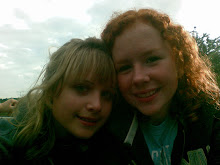
No comments:
Post a Comment